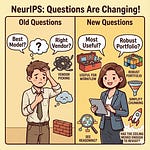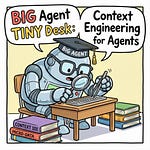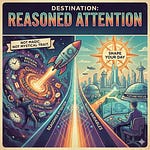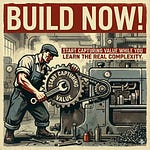Yesterday, Bloomberg dropped Apple's grand AI strategy: a tabletop robot for 2027. A "lifelike" Siri. Smart displays. Home security cameras.
By then, ChatGPT will be on version 7. Claude will have evolved through multiple generations. And Apple will ship... I’m betting they’ll ship a robot running yesterday's AI.
This should terrify you—not because Apple is failing, but because everything Apple taught us about building products is now wrong.
For forty years, Apple didn't just make products. They trained an entire generation—you, me, every PM, every founder, every designer—in the religion of perfection. Wait to ship until it's perfect. Control the full stack. Own the experience end-to-end. Eliminate complexity. The customer doesn't know what they want until you show them.
Sure, we heard about Y Combinator, Paul Graham, “ship fast and break things”—but in the back of all our heads loomed the expectation of Cupertino, and that obsession with quality got more and more important the more scaled our companies got. Breaking things was for small companies, and even Facebook outgrew it.
So these weren't just Apple's principles. They became our principles. The invisible assumptions behind every product decision we make. The voice in our heads saying "would Apple ship this?" or more realistically “wow this kind of sucks is it close enough to the quality bar that it will be ok?”
That instinct to lean into deterministic quality is now trying to kill your company, and it’s not because quality is bad!
Here's what nobody's saying clearly: Apple isn't randomly failing at AI. They're failing in a highly specific pattern that reveals exactly which assumptions you need to invert to succeed. Each of their failures maps to a rule reversal—a place where the old wisdom doesn't just fail, it fails catastrophically.
The products winning right now—ChatGPT, Claude, Midjourney—violate every principle Apple taught us. They shipped broken. They let users figure out use cases. They federate instead of integrate. They iterate in public. They choose capability over polish, every single time.
But this isn't just another "Apple is behind" piece. We’ve had enough of those. This is a decoder ring for the new rules. Because if you're still following the playbook Apple wrote—perfectionism, secrecy, control, curation—you're optimizing for failure. (And if you don’t think you are, I encourage you to listen in on a C-suite conversation sometime—so many of them highlight one or another of these qualities.) But those qualities won’t work anymore. Those same instincts that would have made you successful in 2007 will bury you in 2025.
The 10 lessons I’ve constructed here aren't random observations. They're the exact inversions happening right now—the places where your Apple-trained instincts are betraying you, and what to do instead in the age of AI.
Your iPhone is becoming beautiful glass for accessing ChatGPT. The Mac is becoming a premium terminal for Claude. Apple is becoming what Jobs despised most: expensive infrastructure for other people's intelligence.
Let me show you exactly why the company that perfected the art of technology can't ship AI—and the specific inversions you need to make to build anything that matters in the age of intelligence.
Listen to this episode with a 7-day free trial
Subscribe to Nate’s Substack to listen to this post and get 7 days of free access to the full post archives.













